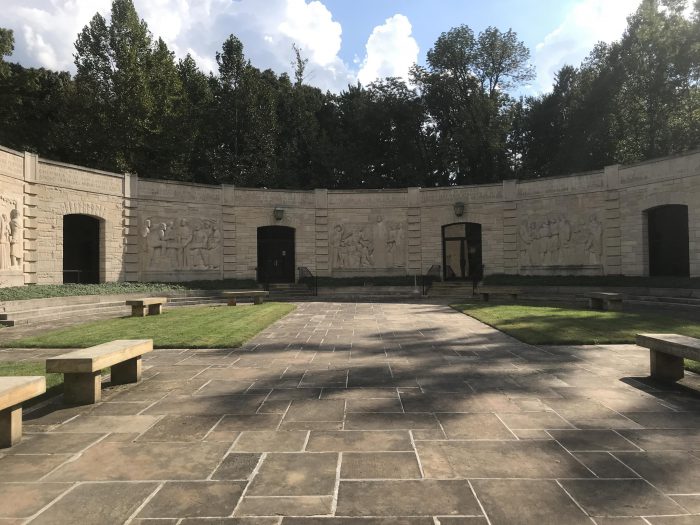It’s a place, not too far from here, that will take you back into the past:Lincoln City, Indiana. It’s home to Lincoln Boyhood National Memorial and it’s where Abraham Lincoln grew up.
The destination is home to a gorgeous building with a museum about Lincoln’s life in Indiana. The memorial also has hiking trails, a recreation of the Lincoln family farm and monthly events. This is where Lincoln spent his formative years of age seven-to-21 living with his mother, father and sister in a one room log cabin on a small farm.
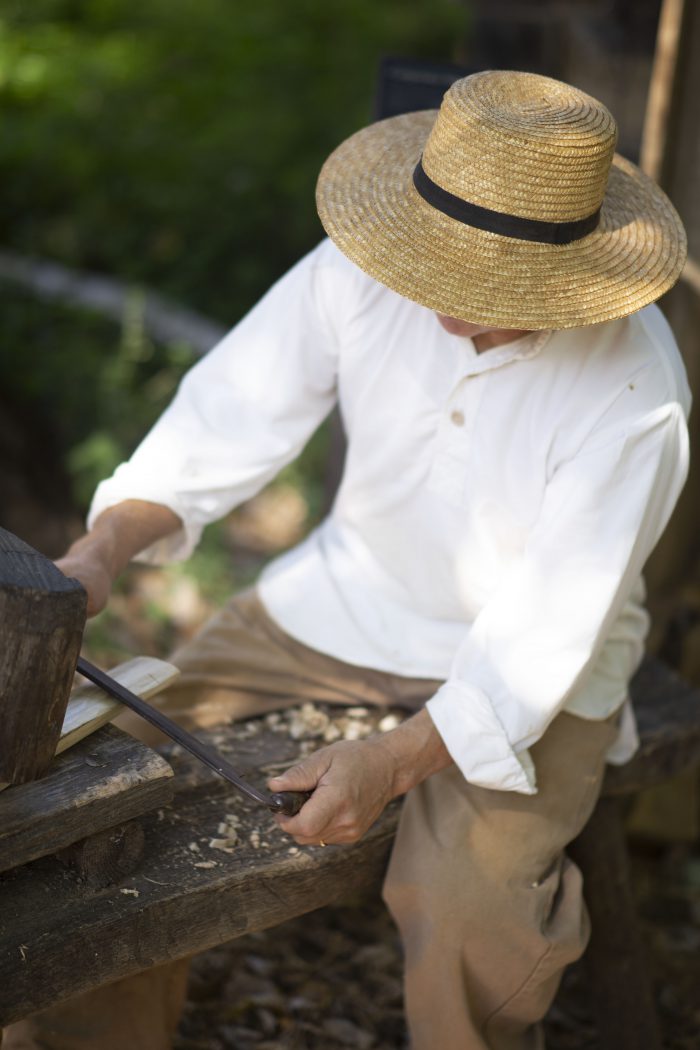
Photo by AJ Salisbury
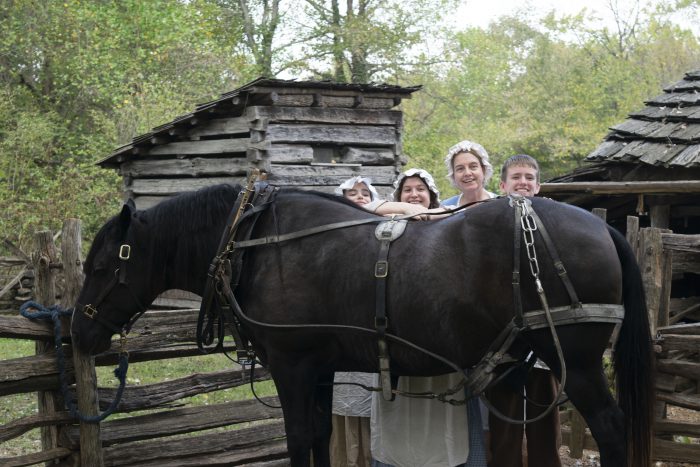
Photo by Logan Feirse
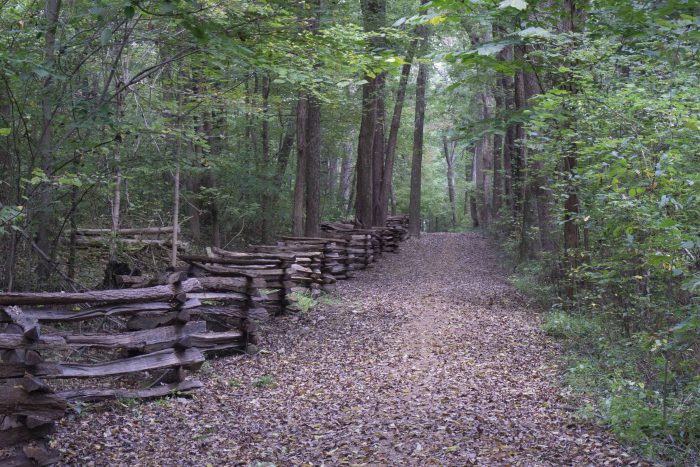
Photo by Spencer Bowman
On the 200th anniversary of Abraham Lincoln’s mothers death, the park re-enacted the event to capture the emotional hadship Lincoln endured. His mothers’ name was Nancy Hanks Lincoln and she died on October 5, 1818 in Lincoln City, Indiana.
“They lived in a one room log cabin and when his mother got sick, she was there in the cabin, when she died, she was there in the cabin,” said Mike Capps, Park Rangers and event host. “So undoubtedly this was a traumatic experience for both him and his sister.”
The woman who cared for Lincoln’s mother was Nancy Rusher Brooner. Her family lived in the same area and were part of Abraham Lincoln’s boyhood community. However, Nancy Rusher Brooner died just a week after Nancy Hanks Lincoln’s death.
Every year, on the anniversary of the two women’s deaths, the extended family travels from across the United States to deliver eulogies for these two women who died over 200 years ago. The family has direct relation to Nancy Rusher Brooner and they reunite every October to honor their history.
Pat Brown, Grand Daughter of Nancy Rusher Brooner said, “For me it’s just a reminder of how good our lives are compared to the harshness of her life.”
Since the two women are buried here at the Lincoln Boyhood Memorial, the family has a ceremony of honor for their ancestor and Abraham Lincoln’s mother. The say it’s their yearly family reunion where they get a chance to reconnect with each other, and their past.
“It gives me a touchstone with history,” Brown said. “When I can place my ancestors in that point in history then I’m much more appreciative to history.”
The family attended the recreation of Nancy Hanks Lincoln’s death event at the park. It was called Death in A One Room Log Cabin. About 40 visitors gathered on October 6, 2018 at the Lincoln Family Farm to watch park volunteers recreate this somber part of Lincoln’s life.
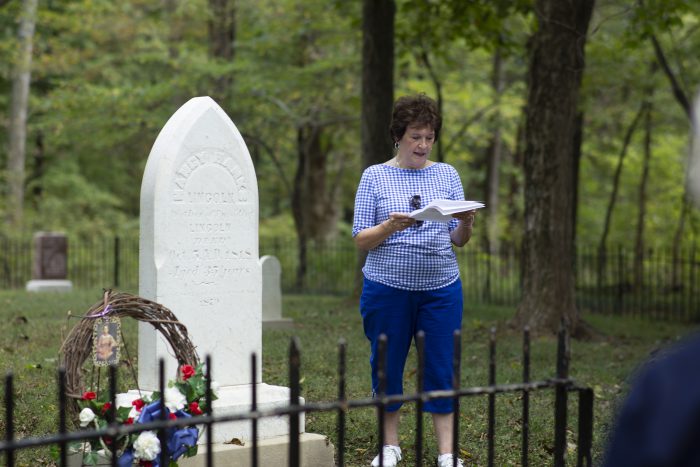
Photo by AJ Salisbury

Photo by AJ Salisbury
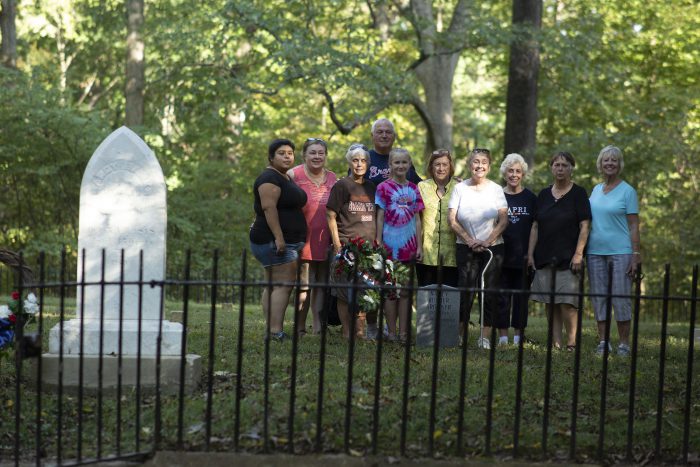
Photo by AJ Salisbury
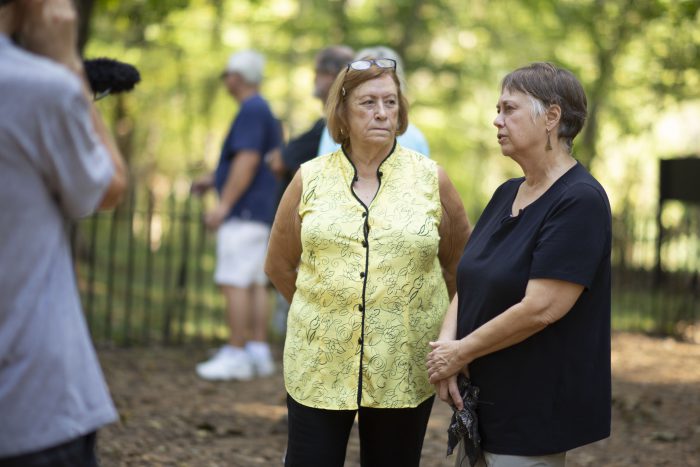
Photo by AJ Salisbury
During the time of the pioneers, outbreak of disease constantly spread among communities. However we know now, the two women died of a common disease in this time period called the milk sickness. This sickness derives from a common flower in southern Indiana called the White Snakeroot. When the cows at the Lincoln farm ate the flower, the poison went into the cows milk causing this deadly disease. Although, in the time period that did not know this was the root of the problem, and they would proceed to drink the milk.
“Death was an extremely important part of life for the pioneers,” Mike Capps, Park Ranger and event host said. “I mean they lived with it on a much more intimate level than on what we do today. You really couldn’t escape it.”
Capps says it’s important to understand what life was like for the pioneers. Death was an extremely different experience for them. There was no hospitals, no medicine and no doctors for those sick and dying. Lincoln’s family only had the support of their community.
Abraham Lincoln was merely nine-years-old when his mother died by his side in their one room log cabin. He even helped construct the coffin for his mothers body and had to bury her with his father.
“It was undoubtedly a traumatic experience both for Abraham and his sister Sarah,” Capps said. “So what this program is designed to do is just kind of try to give people a sense of what that might have been like.”
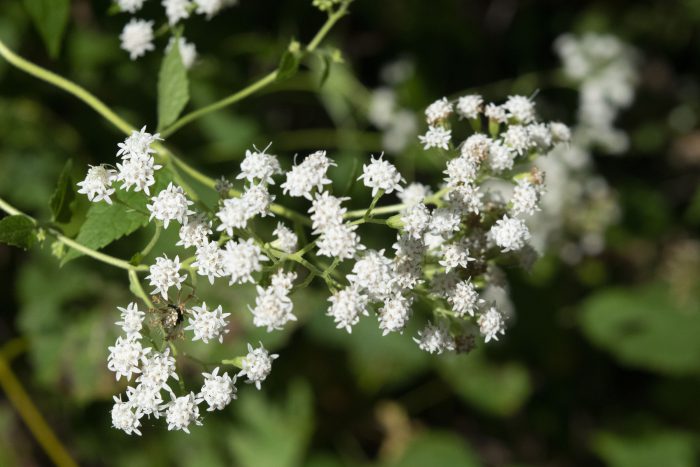
Photo by Spencer Bowman
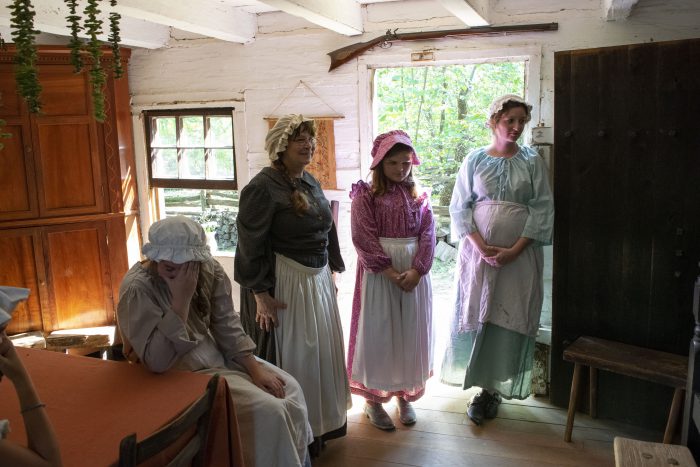
Photo by Spencer Bowman
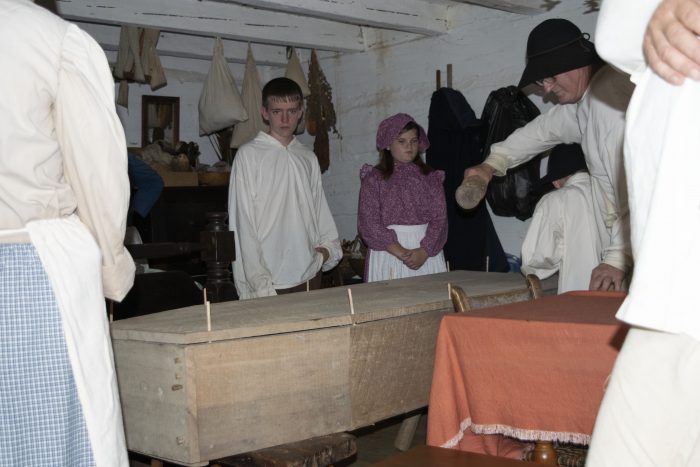
Photo by Logan Feirse
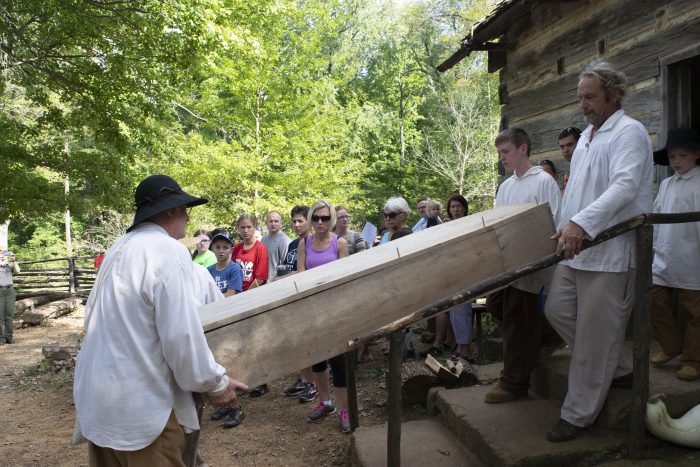
Photo by Logan Feirse
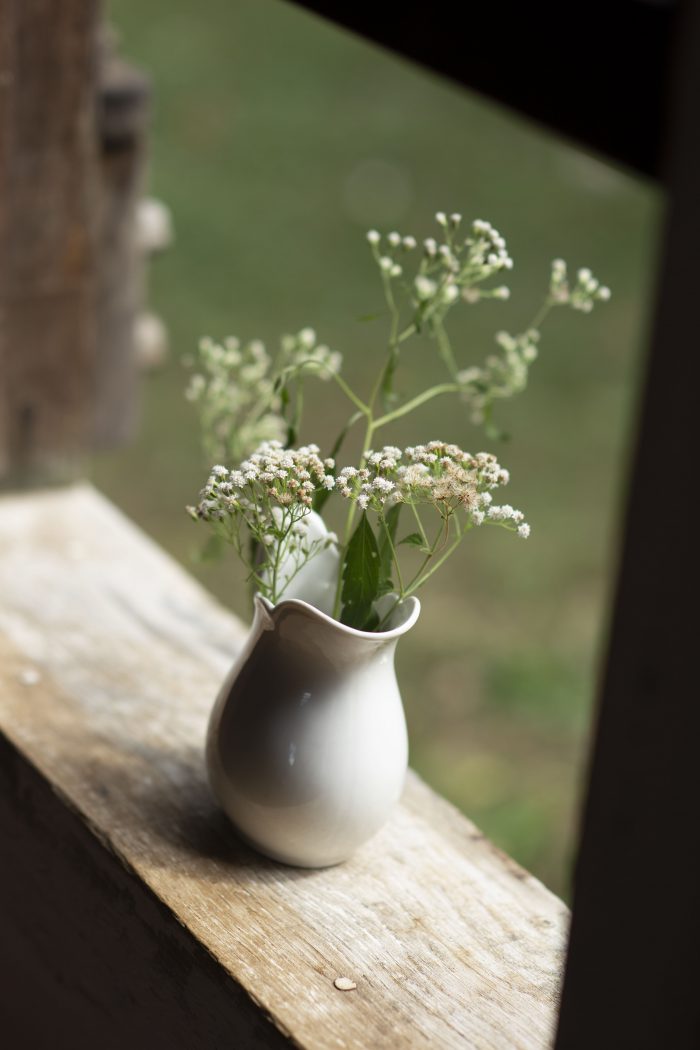
Photo by AJ Salisbury
Visitors at the event were watching in silence as the demonstrators carried the coffin into the wagon and pulled away. However, some say they appreciate the program because it allowed them to understand this portion of history better.
“What I liked about this program is the sense of realism,” Maria Snider, Lincoln City resident said. “They take something we don’t see very often and we take to heart. And they showed it how it’s done in a different time period. It’s a little bit more real than reading it in a book.”
Snider’s daughter and husband were volunteers in the program and she said it’s a great learning experience for her daughter being apart of a living history demonstration.
“It just reminds me again about how precious life is and how short life is,” Snider said. “It’s also very fortunate how far we’ve advanced with our medicine and our technology.”
Mike Capps, considers himself a Lincoln expert, retells this story every year. He says he tries to convey the emotion of what it was truly like to not have the resources we have now. Capps also says how important it is to know this part of Abraham Lincolns when he called Indiana, home.
“This is an opportunity to learn about Lincoln and his time here in Indiana,” Mike Capps said.”It’s important to visit places like this because you learn more about the man himself as opposed to just the historic figure.”
For more information about the event and Lincoln Boyhood National Memorial, visit their website.

